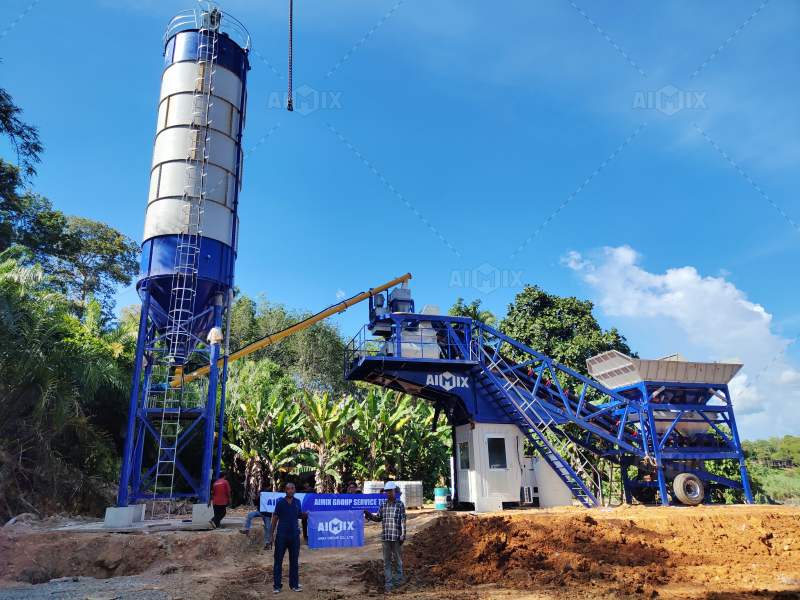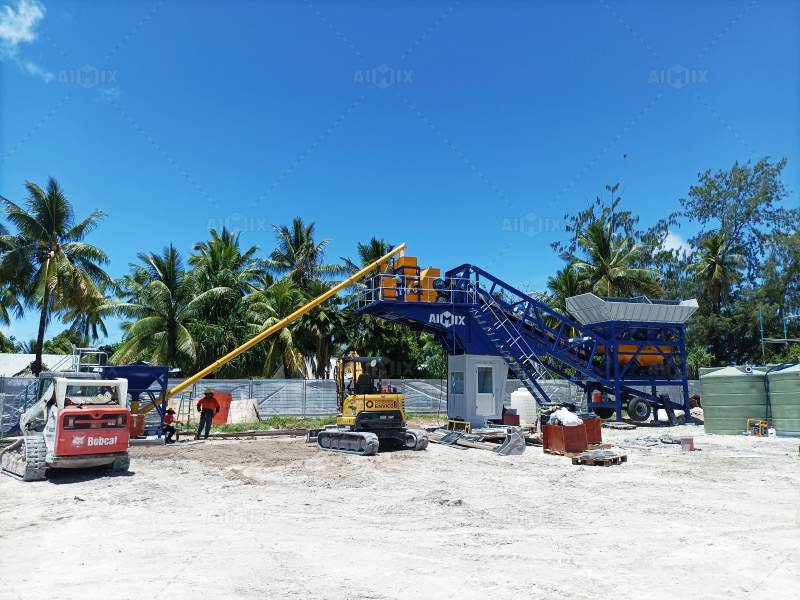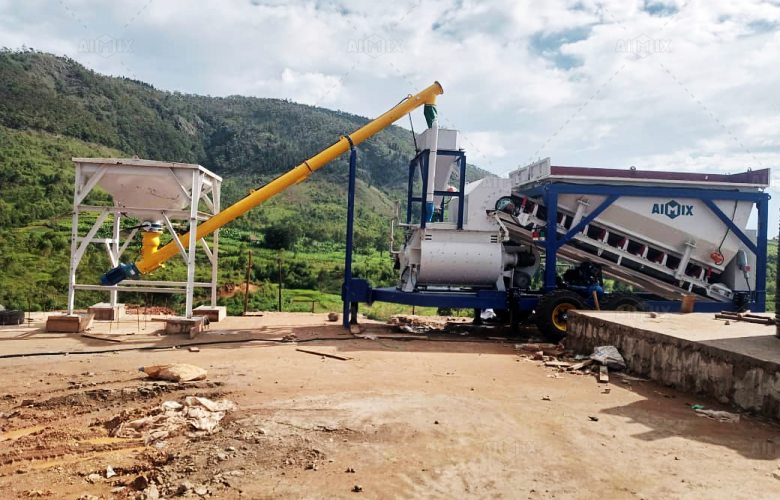In the evolving world of construction, precision, speed, and efficiency have become critical. At the heart of this transformation is the mini concrete batching plant, a compact yet powerful solution designed to meet the demands of small to medium-scale projects. These plants are no longer just a scaled-down version of traditional setups—they now incorporate advanced automation technology that rivals larger systems.
Thanks to innovations in control systems and energy-efficient components, modern mini concrete batching plant offers an impressive mix of flexibility, accuracy, and ease of use. Whether you’re looking at a mobile concrete plant, a portable batching plant, or considering options from leading concrete batching plants manufacturers, automation is the driving force behind the high performance of these compact solutions.

The Rise of Mini Batching Plants in Modern Construction
Mini concrete batching plants were initially designed to cater to low-volume, short-duration projects. However, advancements in automation and digital integration have extended their utility to more complex job sites such as urban infrastructure development, rural road construction, and residential buildings.
Construction companies are increasingly adopting mini plants because they:
Reduce setup time
Offer high-accuracy batching
Minimize labor costs
Support remote and tight-space operations
With productivity and sustainability now crucial in the construction business, the mini batching plant has evolved into an intelligent, automated mixing system that delivers both cost savings and consistent quality.
Smart Automation: The Brain Behind High-Performance Mixing
Automation is what makes today’s mini concrete batching plants stand out. Many are equipped with fully automated control systems that manage the entire mixing process—from material feeding and weighing to mixing and discharging.
Key features of modern automation in mini batching plants include:
PLC-based control panels
Touchscreen interfaces
Real-time production monitoring
Automatic error detection
Recipe management systems
These features enable operators to control the entire process with minimal intervention, significantly reducing the chances of human error. For instance, precise weighing ensures that the correct mix ratio is always maintained, leading to uniform concrete quality in every batch.
Additionally, automation allows for better resource management. Materials like cement, aggregates, and water are used more efficiently, reducing waste and increasing profitability—a key benefit for companies using a mobile concrete plant on remote job sites.

Mobility and Portability: Flexibility Meets Functionality
One of the strongest selling points of mini batching plants is their portability. Whether in the form of a mobile concrete plant mounted on trailers or a compact portable batching plant with foldable components, these systems offer unmatched flexibility.
They can be transported easily from one job site to another, significantly cutting down on time and transportation costs. This feature is particularly beneficial in:
Remote rural construction
Bridge and tunnel work
Temporary municipal projects
Disaster recovery zones
Portable units are designed for quick installation and dismantling, allowing crews to focus on core tasks without being bogged down by lengthy setup times. This level of mobility, when combined with automation, enhances overall project efficiency and scheduling.
Competitive Edge from Leading Concrete Batching Plants Manufacturers
The popularity of mini concrete batching plants has pushed many concrete batching plants manufacturers to focus on compact models with robust automation capabilities. Reputable brands like Aimix, Schwing Stetter, and others have introduced intelligent, energy-efficient designs with plug-and-play options for rapid deployment.
These manufacturers are enhancing product offerings by including:
Integrated dust collection systems
Low-energy consumption mixers
Auto-lubrication and maintenance alerts
GPS tracking and remote diagnostics
Such innovations make mini batching plants attractive for both new entrants and established construction firms seeking to expand their fleet without massive capital outlays. They also ensure that smaller plants meet the same quality and performance standards expected from larger batching systems.

Cost-Efficiency and ROI
Despite their advanced technology, mini concrete batching plants are more affordable than full-scale facilities. The reduced size means lower fuel usage, minimal land requirement, and limited manpower—resulting in significantly lower operational costs.
Thanks to automation, the plant produces more batches with fewer errors and less downtime. This directly translates into higher productivity and faster returns on investment.
Moreover, mini batching plants can serve niche markets like:
Ready-mix concrete for local builders
Precast concrete product manufacturers
Private roadwork and landscaping projects
By entering these underserved segments, contractors and small businesses can tap into additional revenue streams using portable and mobile solutions that are cost-effective and scalable.
Conclusion
The modern mini concrete batching plant is more than a compact solution—it’s a smart, automated mixing system that brings industrial-grade performance to small and mid-sized projects. With the integration of advanced automation, real-time monitoring, and mobility, these plants are transforming how construction companies approach concrete production.
From urban job sites to rural infrastructure builds, the combination of automation and portability in these compact systems ensures higher efficiency, reduced waste, and consistent concrete quality. Supported by leading concrete batching plants manufacturers, the mini plant represents the future of sustainable, efficient, and flexible construction operations.
Whether you’re in search of a mobile concrete plant, a portable batching plant, or simply want to upgrade to smarter technology, investing in a mini batching system could be the key to staying competitive in today’s fast-moving construction landscape.
